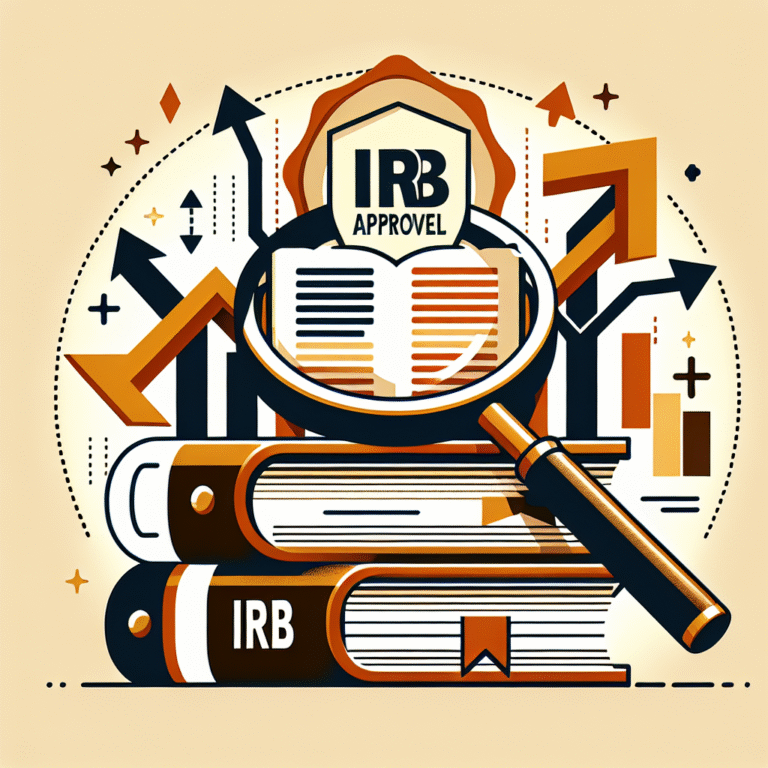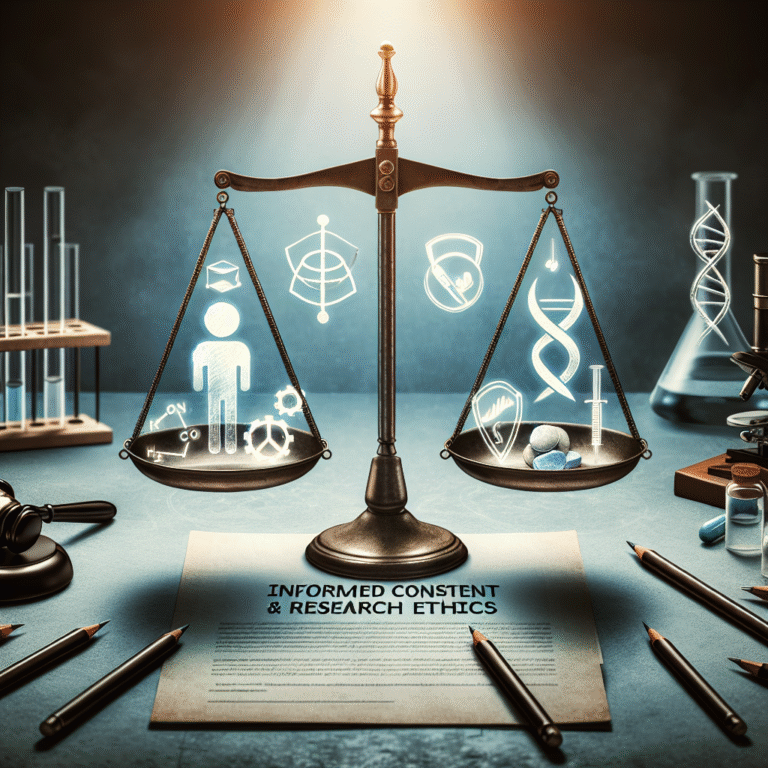
Introduction
In a world inundated with information, the ability to discern meaningful insights from data has never been more crucial. The foundations of scientific inquiry lie not just in the questions we ask, but in how we design our studies to find answers. This brings us to The Art and Science of Experimental Design: Crafting Effective Research Studies—a phrase that encapsulates both the creative and systematic aspects of establishing robust research frameworks. This article is designed to explore that nuanced intersection, revealing how skilful experimental design can elevate your research from mere data collection to a well-structured, insightful investigation.
Whether you’re a seasoned researcher or navigating the academic landscape for the first time, understanding experimental design is essential. Without it, studies can wind up inconclusive, and the valuable data you gather might end up as mere noise. Thus, let’s embark on a journey that blends art and science to master the craft of experimental design.
The Importance of Experimental Design
At the core of any successful research study is a well-thought-out experimental design. This process involves meticulous planning to identify the research question, defining variables, and choosing the appropriate methods for data collection and analysis. A well-designed experiment ensures that your results are valid, reliable, and repeatable—capabilities that are vital in affirming your findings and adding to the body of knowledge in your field.
The Building Blocks of Experimental Design
- Research Questions: What are you trying to answer?
- Hypotheses: What do you predict will happen?
- Variables: What factors will you manipulate, control, or measure?
- Sampling: How will you choose your subjects?
- Data Collection: What methods will you use?
- Analysis Plan: How will you interpret your data?
Each component plays an integral role in shaping your study. For instance, a clearly defined hypothesis provides direction, while a robust sampling strategy ensures your findings are generalizable.
Case Study: The Stanford Prison Experiment
One of the most famous examples of experimental design—and its ethical implications—can be observed in the Stanford Prison Experiment conducted by Philip Zimbardo in 1971. This study aimed to explore the psychological effects of perceived power within a simulated prison environment.
Analysis of the Case Study
While the research yielded fascinating insights into human behavior, it also highlighted the importance of ethical considerations in experimental design. Zimbardo’s lack of safeguards for participants led to psychological distress, sparking debates that continue to influence ethical guidelines in research today. This underlines the dual responsibility of researchers: crafting effective studies while prioritizing participant welfare.
Types of Experimental Designs
To navigate The Art and Science of Experimental Design: Crafting Effective Research Studies, familiarizing yourself with the various types of experimental designs is crucial. Below are some prominent types:
1. Between-Subjects Design
In a between-subjects design, different participants are assigned to different conditions. This design minimizes the risk of carryover effects, but it requires a larger sample size to achieve statistical power.
2. Within-Subjects Design
Here, the same participants are exposed to all experimental conditions. This can be advantageous in controlling individual differences, but it carries the risk of order effects.
3. Factorial Design
A factorial design allows researchers to study the effects of two or more independent variables simultaneously. This approach can yield comprehensive insights into multi-variable interactions.
4. Randomized Control Trials (RCTs)
Often regarded as the gold standard in experimental design, RCTs randomly assign participants to treatment or control groups, reducing biases and enhancing the validity of the findings.
Table 1: Comparison of Experimental Designs
| Design Type | Advantages | Disadvantages |
|---|---|---|
| Between-Subjects | Minimizes carryover effects | Larger sample size needed |
| Within-Subjects | Controls individual differences | Risk of order or carryover effects |
| Factorial | Understanding interactions between variables | Complex analysis required |
| Randomized Control Trial | Reduces biases, high validity | Cost and time-intensive |
Crafting Your Research Study: Steps to Follow
If you aim to master The Art and Science of Experimental Design: Crafting Effective Research Studies, follow these essential steps as a guiding framework:
Step 1: Define Your Research Question
Start with a clear and concise query. Formulate questions that identify what you want to investigate. For example, "How does sunlight exposure affect mood among urban dwellers?"
Step 2: Develop Hypotheses
Transform your research question into a testable hypothesis. Your hypothesis may look something like: "Increased sunlight exposure will lead to improved mood in urban dwellers."
Step 3: Identify Variables
Establish your independent variable (sunlight exposure) and dependent variable (mood). Additionally, consider potential confounding variables that could interfere with your results.
Step 4: Select Your Experimental Design
Choose an appropriate design based on your research question, hypotheses, and available resources. Depending on your study, this could be between-subjects, within-subjects, or factorial.
Step 5: Sampling
Decide your sample size and sampling technique. Random sampling enhances generalizability, while stratified sampling ensures representation across different subgroups.
Step 6: Data Collection Methods
Choose your tools—surveys, observation, experiments—ensuring they align with your goals. Consistency in data collection enhances reliability and validity.
Step 7: Ethical Considerations
Prioritize ethics by ensuring participant consent, confidentiality, and the right to withdraw. Always consider the implications of your research on societal norms and individual lives.
Step 8: Analyze the Data
Select appropriate statistical methods to analyze the data, making interpretations based on the study’s outcomes and existing literature.
Step 9: Report and Reflect
Summarize findings in a comprehensive report while addressing limitations and potential areas for future research. Reflection on your study cultivates continuous improvement in your research skills.
Real-World Applications of Experimental Design
Experimental design isn’t just a theoretical construct; it’s a powerful tool that leads to impactful discoveries across various fields. Below are notable examples where effective experimental design has made significant contributions.
Case Study: Medical Research
In the realm of medical research, randomized control trials (RCTs) have been indispensable. The development of the COVID-19 vaccine serves as a poignant example. Researchers utilized well-structured RCTs to assess the vaccines’ efficacy and safety, ensuring that a reliable solution was available to combat the pandemic.
Analysis of Medical Research
The rigorous experimental design used here not only demonstrated the vaccines’ effectiveness but also strengthened public trust in scientific processes. Transparent reporting of results reassured the global community about the efficacy and safety of the vaccines.
Case Study: Psychology
In psychology, studies exploring cognitive dissonance have employed both between and within-subject designs. Researchers like Leon Festinger revealed insights into human behavior through interaction with factual inconsistencies in personal beliefs.
Analysis of Psychological Research
The application of rigorous experimental design in psychological studies has illuminated the depths of cognitive processes, shaping fields such as social psychology and behavioral economics.
Common Challenges in Experimental Design
As you engage with The Art and Science of Experimental Design: Crafting Effective Research Studies, you may encounter several challenges that can hinder your progress. Here’s how to overcome them:
1. Bias
Bias can skew findings and mislead outcomes. Employing randomization techniques and blinding can significantly reduce bias.
2. Sample Size
Underpowered studies may lead to inconclusive results. Conduct thorough power analyses to determine the appropriate sample size required to detect meaningful effects.
3. Ethical Considerations
Balancing the pursuit of knowledge with ethical constraints can be tricky. Always prioritize participant rights and wellbeing in your research.
4. Complexity of Variables
Understanding interactions between multiple variables can be daunting. Clear hypotheses and a factorial design can help untangle these complexities.
5. Analyzing Results
Selecting appropriate statistical tests can be challenging. Familiarizing yourself with statistical software and consulting statisticians can aid in accurate data analysis.
Conclusion
In summary, mastering The Art and Science of Experimental Design: Crafting Effective Research Studies is an essential endeavor for researchers seeking to contribute valuable insights to their fields. With clearly defined research questions, hypotheses, and a structured methodology, your studies can not only enhance understanding but also drive meaningful change in society.
Crafting effective research demands diligence, creativity, and ethics—akin to an artist painting on a canvas. Your experimental design serves as the blueprint, guiding the way to impactful discoveries that can enrich lives and expand scientific horizons.
So step forth with confidence, bearing in mind that while precision and rigor are essential, the beauty of discovery lies in the intersection of art and science.
FAQs
1. What is experimental design?
Experimental design refers to the systematic planning of how an experiment will be conducted, including variables, controls, and methods for data collection and analysis.
2. Why is experimental design important in research?
Without strong experimental design, studies risk producing unreliable or invalid results. Proper design ensures that findings are credible and applicable to the broader context.
3. How do you choose between different types of experimental design?
The choice of design depends on the research question, available resources, and the nature of the variables involved. Consideration of potential biases and logistical constraints will guide your decision.
4. What ethical considerations should I keep in mind while designing an experiment?
Key ethical considerations include informed consent, confidentiality, avoiding deception wherever possible, and ensuring the welfare of participants.
5. Can I improve my experimental design skills?
Yes! Continuous learning through workshops, professional development courses, and staying updated on current research methodologies can enhance your skills in experimental design.
By embracing The Art and Science of Experimental Design: Crafting Effective Research Studies, you pave the way for innovative research that not only deepens understanding but also engages with the complexities of the human condition.
















